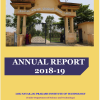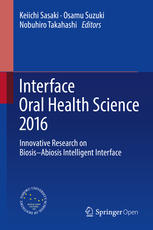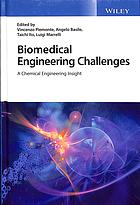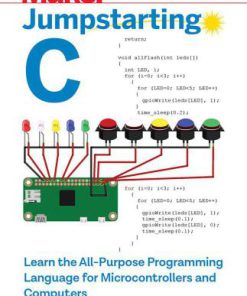Bioelectrochemical interface engineering 1st Edition by Navanietha Krishnaraj,Rajesh Sani 1119538424 9781119538424
$50.00 Original price was: $50.00.$25.00Current price is: $25.00.
Bioelectrochemical interface engineering 1st Edition by Navanietha Krishnaraj,Rajesh Sani – Ebook PDF Instant Download/Delivery:9781119538424 ,1119538424
Full download Bioelectrochemical interface engineering 1st Edition after payment
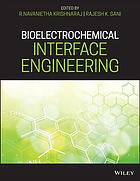
Product details:
ISBN 10:1119538424
ISBN 13:9781119538424
Author:Navanietha Krishnaraj,Rajesh Sani
An introduction to the fundamental concepts and rules in bioelectrochemistry and explores latest advancements in the field
Bioelectrochemical Interface Engineering offers a guide to this burgeoning interdisciplinary field. The authors–noted experts on the topic–present a detailed explanation of the field’s basic concepts, provide a fundamental understanding of the principle of electrocatalysis, electrochemical activity of the electroactive microorganisms, and mechanisms of electron transfer at electrode-electrolyte interfaces. They also explore the design and development of bioelectrochemical systems.
The authors review recent advances in the field including: the development of new bioelectrochemical configurations, new electrode materials, electrode functionalization strategies, and extremophilic electroactive microorganisms. These current developments hold the promise of powering the systems in remote locations such as deep sea and extra-terrestrial space as well as powering implantable energy devices and controlled drug delivery. This important book:
• Explores the fundamental concepts and rules in bioelectrochemistry and details the latest advancements
• Presents principles of electrocatalysis, electroactive microorganisms, types and mechanisms of electron transfer at electrode-electrolyte interfaces, electron transfer kinetics in bioelectrocatalysis, and more
• Covers microbial electrochemical systems and discusses bioelectrosynthesis and biosensors, and bioelectrochemical wastewater treatment
• Reviews microbial biosensor, microfluidic and lab-on-chip devices, flexible electronics, and paper and stretchable electrodes
Written for researchers, technicians, and students in chemistry, biology, energy and environmental science, Bioelectrochemical Interface Engineering provides a strong foundation to this advanced field by presenting the core concepts, basic principles, and newest advances.
Bioelectrochemical interface engineering 1st Table of contents:
1 Electrochemical Performance Analyses of Biofilms
1.1 Introduction
1.2 Electrochemical Principles
1.3 Cyclic Voltammetry
1.4 Electrochemical Impedance Spectroscopy
1.5 Electrochemical Noise (ECN) Technique
1.6 Conclusion
Acknowledgments
References
Further Reading
Take‐home Message
Test Yourself
2 Direct Electron Transfer in Redox Enzymes and Microorganisms
2.1 Introduction
2.2 Wiring Enzymes to the Electrode Surface
2.3 Wiring Microorganisms to the Electrode Surface
References
Take‐home Message
Test Yourself
3 Electrochemical Techniques and Applications to Characterize Single‐ and Multicellular Electric Microbial Functions
3.1 Introduction to Microbial Electrochemical Functions and Processes
3.2 Electrochemical Techniques Related to Single‐cell Processes
3.3 Electrochemical Techniques Related to Biofilm Processes
3.4 Techniques to Analyze Nanowires
References
Take‐home Message
Test Yourself
4 Electrochemical Analysis of Single Cells
4.1 Introduction
4.2 Single‐cell Analysis Applications and Current Technologies
4.3 Electrochemical Methods for Single‐cell Analysis
4.4 Microelectrodes for Single‐cell Analysis
4.5 Electroluminescence‐based Single‐cell Measurements
4.6 Lab‐on‐chip‐based Single‐cell Analysis
4.7 Conclusion
References
Take‐home Message
Test Yourself
5 Biocorrosion
5.1 Introduction
5.2 Microorganisms Involved in Corrosion
5.3 Mechanisms
5.4 Biocorrosion Control Strategies
5.5 Materials Vulnerable to Biocorrosion
5.6 Biocorrosion of Biomedical Implants
5.7 Biocorrosion Detection Techniques
5.8 Conclusion
Acknowledgments
References
Further Reading
Take‐home Message
Test Yourself
6 Microbial Fuel Cells
6.1 Introduction
6.2 Microbial Fuel Cells
6.3 Measuring Performance
6.4 MFC Configuration
6.5 Materials
6.6 Limitations in MFCs
6.7 Other MFC‐based Technologies
6.8 Pilot‐scale MFCs
References
Take‐home Message
Test Yourself
7 Biophotovoltaics
7.1 Introduction
7.2 Photocurrent Generation with Biological Catalysts
7.3 Photosynthetic Microbes as Photobioelectrocatalysts in BESs
7.4 Biocatalysts of Photosynthetic Organisms
7.5 Electron Transfer in Microalgae During Photosynthesis (Light Reaction)
7.6 Electron Transfer Mechanisms in Purple Photosynthetic Bacteria
7.7 Electron Transfer Mechanisms of Cyanobacteria
7.8 Models of Solar Energy Conversion Devices
7.9 Applications and Future Perspectives
7.10 Conclusion
References
Take‐home Message
Test Yourself
8 An Insight into Plant Microbial Fuel Cells
8.1 Introduction
8.2 Different Types of Plants and Their Bioelectricity Generation Capabilities
8.3 Bioprocess Structure
8.4 Variation in PMFC Types, Operating Conditions, Design, Electrodes, and Membranes Used
8.5 PMFCs as New Electricity Generation Technology
8.6 Challenges of PMFCs
8.7 Conclusion
References
Take‐home Message
Test Yourself
9 Electroanalytical Techniques for Investigating Biofilms in Microbial Fuel Cells
9.1 Introduction
9.2 Conventional Biofilm Investigation Techniques
9.3 Electroanalytical Techniques
9.4 Electrode Polarization
9.5 Voltammetry (LSV)
9.6 Scanning Tunneling Microscopy
9.7 Electrochemical Quartz Crystal Microbalance (e‐QCM)
9.8 Conclusion
Acknowledgments
References
Take‐home Message
Test Yourself
10 Progress in Development of Electrode Materials in Microbial Fuel Cells
10.1 Introduction
10.2 Electrode Materials in MFCs
10.3 Effect of Surface Treatment on Electrodes
10.4 Conclusion
Acknowledgments
References
Take‐home Message
Test Yourself
11 Synthetic Biology Strategies to Improve Electron Transfer Rateat the Microbe–Anode Interface in Microbial Fuel Cells
11.1 Introduction
11.2 Extracellular Electron Transfer (EET) Mechanisms from the Microbe to the Anode
11.3 Synthetic Biology Strategies to Improve the EET Rate from Microbes to Anode
11.4 Synthetic Biology to Optimize Current Generation by Yeast
11.5 Conclusion
References
Take‐home Message
Test Yourself
12 Microbial Electrolysis Cells (MECs)
12.1 Introduction
12.2 Fundamentals of MEC Technology
12.3 Crucial Factors Governing the Performance of MECs
12.4 Current Applications of MECs
12.5 Conclusion
Acknowledgments
References
Take‐home Message
Test Yourself
13 Microbial Desalination Cells
13.1 Introduction
13.2 Overview of Desalination Cells
13.3 MDC Applications and Concepts
13.4 Desalination in MDCs
13.5 Different Configurations of MDCs
13.6 Conclusion
References
Take‐home Message
Test Yourself
14 Microbially Charged Redox Flow Batteries for Bioenergy Storage
14.1 Introduction
14.2 Redox Flow Batteries
14.3 Organic Compounds for RFBs
14.4 Coupling RFBs with Renewable Energy Production Technologies
14.5 Future Perspectives
14.6 Conclusion
Acknowledgments
References
Take‐home Message
Test Yourself
15 Artificial Photosynthesis
15.1 Introduction
15.2 Basic Principles of Natural Photosynthesis
15.3 Artificial Photosynthetic Systems
15.4 Strategies for Improvement of Photoelectrode Performance
15.5 Operational Dye‐sensitized Solar Cells and Solar‐to‐Fuel Devices
15.6 Conclusion
Acknowledgments
References
Take‐home Message
Abbreviations
Test Yourself
16 Bioelectrochemical Systems for Production of Valuable Compounds
16.1 Introduction
16.2 From Electricity to Product
16.3 Conclusion
Acknowledgments
References
Take‐home Message
Test Yourself
17 Modernization of Biosensing Strategies for the Development of Lab‐on‐Chip Integrated Systems
17.1 Introduction
17.2 Types of Biosensors
17.3 Lab‐on‐Chip Technologies
17.4 Conclusion
Acknowledgment
References
Take‐home Message
Test Yourself
18 Electrochemical Immunosensors
18.1 Introduction
18.2 Immunosensors in Protein Immunoassays
18.3 Types of Immunosensors
18.4 Impedimetric Immunosensors
18.5 Potentiometric Immunosensors
18.6 Voltammetric and Amperometric Immunosensors
18.7 Conductometric Immunosensors
18.8 Capacitive Immunosensors
18.9 Role of Nanomaterials in Immunosensors
18.10 Applications of Immunosensors
18.11 Conclusion
References
Take‐home Message
Test Yourself
19 Recent Updates on Inkjet‐Printed Sensors
19.1 Introduction
19.2 Inkjet‐Printed Electrochemical‐Based Sensors
19.3 Inkjet‐Printed Colorimetric‐based Sensors
19.4 Inkjet‐Printed Fluorescence‐based Sensors
19.5 Other Techniques and Developed Devices
19.6 Summary and Future Perspectives
Acknowledgments
References
Take‐home Message
Test Yourself
20 Electrochemical Systems for Healthcare Applications
20.1 Introduction
20.2 Point‐of‐care Sensor Systems
20.3 Wearable Electrochemical Systems
20.4 Implantable Electrochemical Nanodevices
20.5 Conclusion
Acknowledgments
References
Take‐home Message
Test Yourself
21 Synthetic Strategies of Nanobioconjugates for Bioelectrochemical Applications
21.1 Introduction
21.2 Fabrication Processes of Nanobioconjugated Systems
21.3 Applications of Nanobioconjugates
21.4 Conclusion
References
Take‐home Message
Test Yourself
22 Electrochemical Biosensors with Nanointerface for Food, Water Quality, and Healthcare Applications
22.1 Introduction
22.2 Enzymatic Redox‐type Biosensors
22.3 Water
22.4 Enzymatic Inhibition–type Biosensors
22.5 Water Quality
22.6 Conclusion
Acknowledgments
References
Take‐home Message
Test Yourself
23 Enzymatic Electrode–Electrolyte Interface Study During Electrochemical Sensing of Biomolecules
23.1 Introduction
23.2 Conducting Substrates for Sensing Applications
23.3 Sensing Techniques
23.4 Electrochemical Techniques for Sensing Analytes
23.5 Different Modified Electrodes for Enzyme Functionalization
23.6 A Plausible Mechanism of Electron Transfer: An Electrochemical Equivalent Circuit Analysis
23.7 Enzyme‐less Glucose Oxidation: Off Course for a New Generation?
23.8 Conclusion
References
Take‐home Message
Test Yourself
24 Quantum Dots for Bioelectrochemical Applications
24.1 Introduction
24.2 Nanotechnology
24.3 Structure of QDs
24.4 Characteristics of QDs
24.5 Synthesis Processes
24.6 Electrochemical Sensing of QDs
24.7 Biosensor Technology
24.8 Bioelectrochemical Applications of QDs
24.9 QDs: Modeling and Optimizations
24.10 Conclusion
References
Take‐home Message
Test Yourself
25 Enzymatic Self‐powered Biosensing Devices
25.1 Enzymatic Fuel Cells
25.2 Electron Transfer Mechanisms
25.3 Enzyme Immobilization
25.4 EFC‐based Biosensors
25.5 Conclusion
People also search for Bioelectrochemical interface engineering 1st:
interface engineer salary
interface engineer job description
bioelectrochemical
interface engineer salary
bioelectrochemical reactor
Tags:
Navanietha Krishnaraj,Rajesh Sani,Bioelectrochemical,engineering
You may also like…
Engineering - Automotive
Tire engineering an introduction First Edition by Brendan Rodgers ISBN 0367442280 978-0367442286
Children's Books - Science
Engineering


